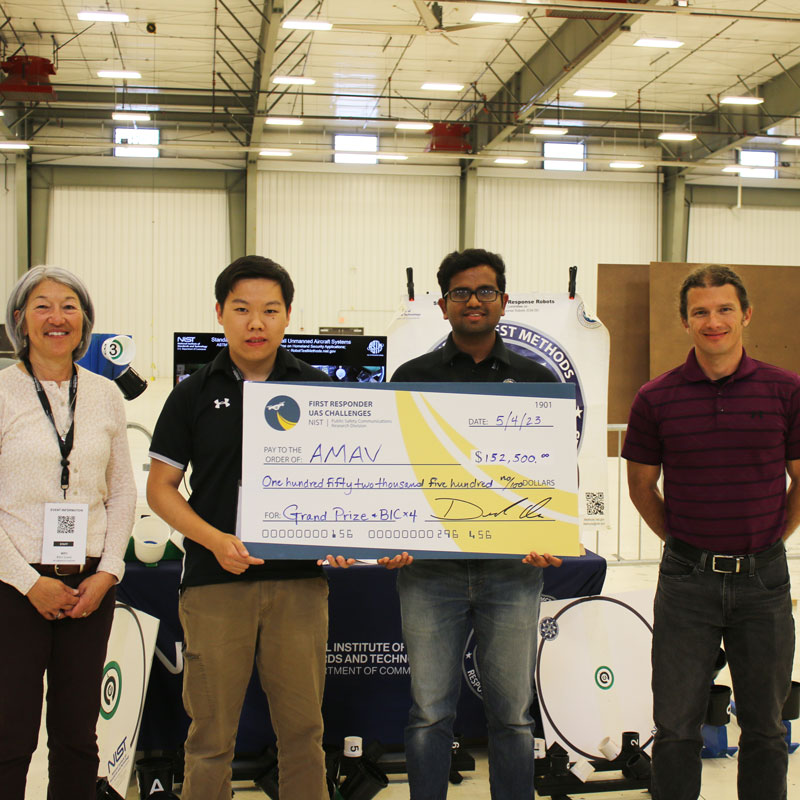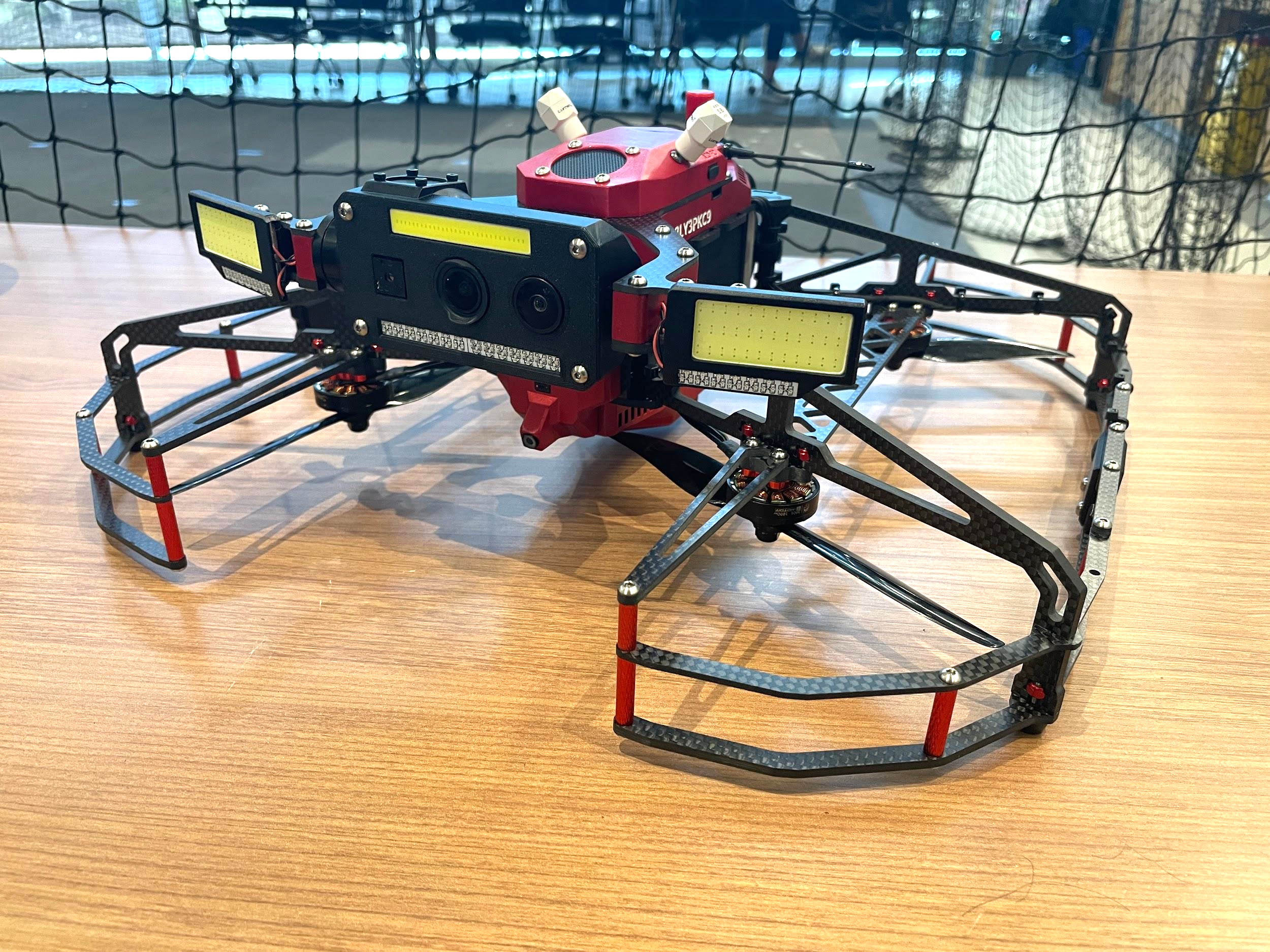“Gambit” Pays Off in UMD Team’s Search-and-Rescue Competition Win
The University of Maryland Autonomous Micro Air Vehicle (AMAV) team beat out ten fellow competitors in the final round of NIST’s First Responder UAS Indoor Challenge to bring home not only the grand prize and $150K, but they also scored four out of the six Best-in-Class awards. Think search and rescue, and you might conjure images of people lost in remote wilderness or stranded at sea, but what happens when disasters strike indoors, making building interiors dangerous, if not deadly, for search and rescue personnel to provide aid? That is exactly the type of scenario that the competition challenged teams to develop for—a simulated earthquake disaster, complete with debris and victims. “It was an incredibly challenging environment to design for,” said Animesh Shastry, aerospace engineering Ph.D. student and the team lead on this competition project. “Imagine a multi-story building with ceiling tiles and wires hanging down, furniture tipped over and mannequins under mattresses and just junk everywhere, with debris and dust in the air.” To address the unique challenges of flying indoors, the team developed an incredibly agile and compact drone—dubbed Gambit (pictured at right)—that used an advanced onboard sensing system enabling it to fly without the use of GPS. “It’s a technique called visual odometry,” explained Derek Paley, the team’s faculty advisor and both professor in aerospace engineering and director of the Maryland Robotic Center. “Onboard cameras allow Gambit to localize features and deduce its own motion relative to those features. It can hold its position with incredible stability and maneuver much more reliably even in the absence of GPS.” Gambit also features thermal, high definition (HD), and night-vision cameras on a gimbal with 180° range so it can still ‘see’ in a dark environment. However, all of this technology had to be developed to be as cost-effective as possible per NIST competition guidelines. “We created a small, highly capable drone that was best in class across a wide range of considerations,” explained Derek Paley, the team’s faculty advisor and professor in aerospace engineering. “And we did it for $5000 as compared to industry models costing over $50,000.” Beyond cost, the team really wanted to ensure that they took first responders’ needs into consideration in their design. Through participation in Maryland’s I-Corp Program, an NSF-funded program that offers entrepreneurial training, team members were able to interview a variety of first responders. “It really helped us better understand from the get-go what kind of features they were looking for, and what features were lacking in existing drones,” said Qingwen Wei, a senior in aerospace engineering and the team’s design lead and pilot. “We learned that reliability was one of the top features, which is also why we dedicated so many hours to testing our drone, to find all of the bugs and work out any issues.” That work paid off, and by competition time, the Maryland team could deploy Gambit into action in under two minutes, while other teams took much longer, and in search and rescue, where minutes lost can cost lives, rapid deployment is critical. “Our design was also very safe,” added Wei. “Because all of our wires and the rotors were enclosed. So, if we hit an obstacle, the drone would bounce off, instead of getting entangled or getting shut off.” The team’s dedication to making a reliable, safe and easy-to-fly drone that addressed responders’ needs helped the team win the competition’s First Responder’s Choice award for the second year in a row. The AMAV Team also won the 2021 NIST UAS FastFind Challenge 3.1, which required them to find multiple missing persons in more than 70 acres of forest. Looking ahead, the team is exploring options for improving and commercializing Gambit, based on interest from the competition sponsors and attendees. Although drone technology is a very crowded space at the moment, Gambit is a one-of-a-kind drone, according to Paley. In the meantime, however, the NIST 2023 challenge was announced, and the team is already thinking about their submission. “It is also an indoor challenge, so we are starting from a really good position with Gambit, and some of these students have competed in at least a half dozen competitions by now, and they’re pros” said Paley, who has mentored the AMAV team for ten years. “Here at Maryland and the Clark School of Engineering, we have a tradition of excellence in student competitions.”
Related Articles: May 15, 2023 Prev Next |



